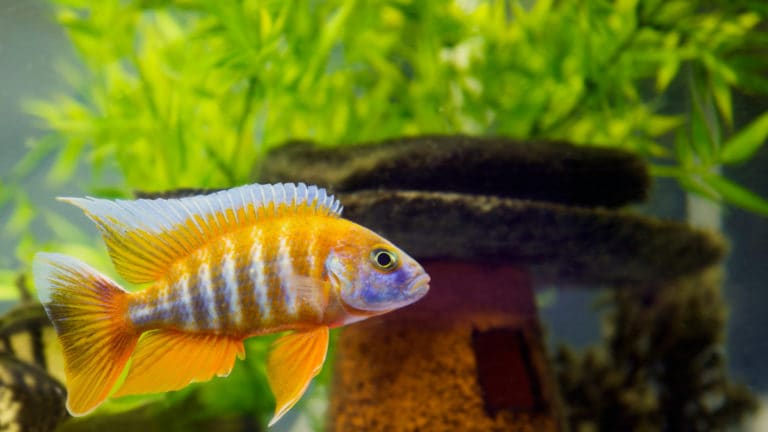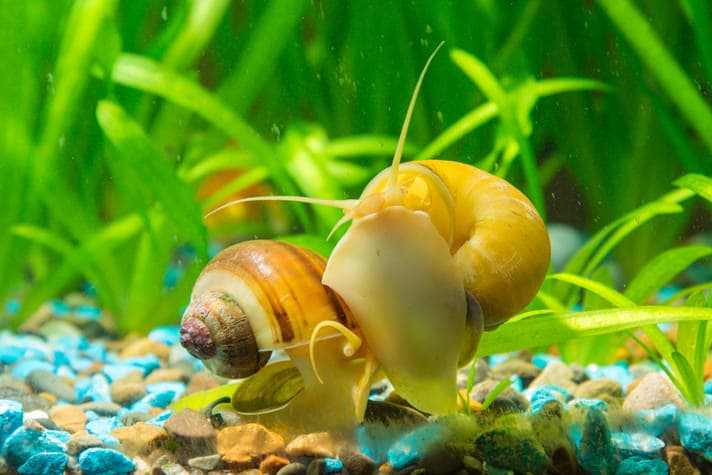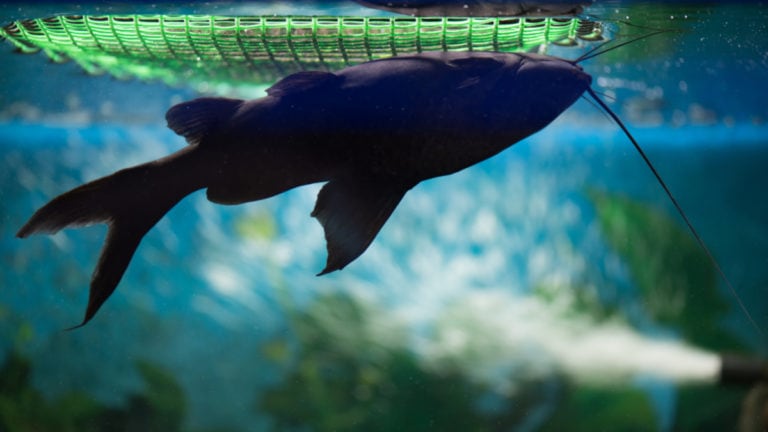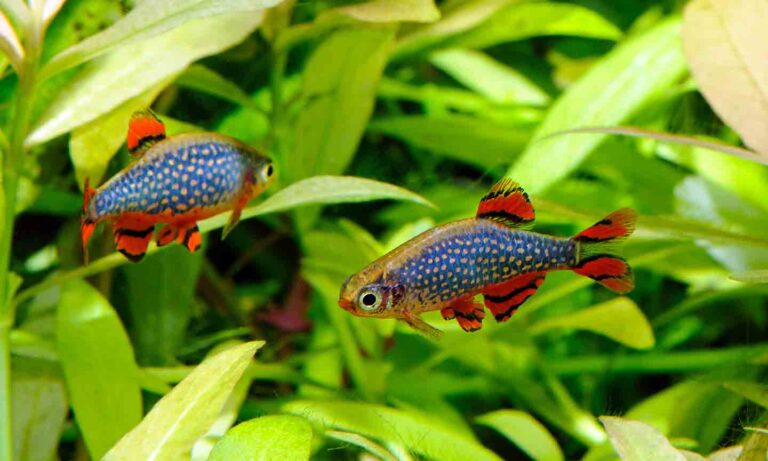“The usual suspects” in the way of marine organisms that die way too easily in aquariums include pinnatus batfish, ribbon moray eels, cleaner wrasses and the Moorish idol (Zanclus cornutus). The Moorish idol ranks with the worst, very infrequently living more than a week in captivity. However, as with the other species mentioned, there have been folks who have had success keeping Zanclus cornutus.
There is but one species in the family Zanclidae, though some literature still lists the invalid name of Zanclus canescens. With its bold markings and prominent rostrum, the Moorish idol is an unmistakable reef fish. It is useful to keep in mind the “higher taxonomy” of this fish, as Moorish idols are part of the same group as tangs (the suborder Acanthuroidea). Much of their behavior in challenging each other, socializing and even reproduction is similar to the acanthurids.
Moorish idols in the wild are outright plump compared with the thin ones that hobbyists see displayed in aquariums. Many offered for sale are tremendously beat up, often with not much of their flowing dorsal fin left by the time they make it to your dealer’s tank (this appendage can easily and quickly grow back). It is of paramount importance that you avoid thrashed specimens, especially those that are too thin. Skinny specimens rarely live.
Source of collection is important. This fish can be rather common over its extensive range across the Indo-Pacific from eastern Africa to the tropical eastern Pacific, but the best specimens available hail from Hawaii and sporadically from Mexican waters. Perhaps these source locales yield “fresher” catches (shorter air flights), or maybe they’re caught with better methods. I have collected this species in both Hawaii and Mexico and can assure you that the Moorish idols are robust in both locales.
Don’t buy specimens that have just arrived at the store. It is impossible to tell what real condition these animals are in, and most deaths occur “mysteriously” with these fish (as well as most species) within the first day or two of arrival. Wait a few days after their arrival at the store to evaluate idols for purchase.
Beware of discolored, poorly behaving specimens. At nighttime this species darkens up and rests on the bottom. By day it should regain its color and be swimming about. Avoid dark or splotchy individuals hanging in the corners or bottom of the tank. You want to locate well-colored, active specimens that are alert and eating.
Behavior
With Moorish idols, there is much more that you get than what immediately matches your observations. This species has always intrigued me because it dies so easily, yet it was so amazingly robust when we’d collect it in Mexico. In Mexico, these fish were kept with other more valuable species in bait receivers, eating paper towels and orange peels – and they lived! How could this be the same species? I believe that there is a range of adaptability by species to captive conditions, and I think that the Moorish idol is just not very adaptable.
Compatibility
Zanclus cornutus is of enormous beauty and interesting behavior. These fish are territorial and in many ways are like the related tangs, fighting in the same nose-to-nose, circling, tail-swatting (sans spikes) manner. They also bite, play and are curious about their enclosures and tankmates. The Moorish idols are intriguing indeed. Moorish idols are found as pairs most frequently in the wild, and any pair is sometimes accompanied by a another decidedly smaller male. The species forms temporary shoals (up to 50 or so individuals) in a sort of “mobbing” behavior, again, akin to the surgeonfishes, to exploit an already occupied territory. The best example most commonly observed here are incidents in which resident damselfishes are displaced for minutes, while marauding idols invade their space to remove sessile invertebrates and algae as food.
In captivity, almost everyone tries to keep this species solo, and I believe this is a mistake. Though it is best to carefully acclimate new purchases separately to assure their health, as well as cleanliness from pathogens and parasites, few aquarium animals kept on their own do well for any period of time. The best way to keep this species alive long-term is to pair two together, quarantine the established animal for a few days to give the new one a chance to become familiar and feed both at the same time out of view from either.
Tankmates should not be too boisterous in their swimming and not aggressive behaviorally toward the idol. Hence, large pomacanthids, and almost all surgeonfishes and rabbitfishes should be excluded. Motile invertebrates are by and large safe, but attached invertebrates or algae may be consumed in time.
System
The suggested minimum fish aquarium size for this species is 200 gallons (Dodds, 2008). I have seen this species kept in more modest enclosures (6-foot length), but the bigger the system, the better. Space is absolutely needed for keeping this species successfully on a few counts. For one, it is a wide-ranging fish that suffers tremendously for not having three dimensions to move about in. Second, Moorish idols really need to have a sense (and reality) of being able to get away from you and from other fish in their system. They can’t do this in small volumes, and if kept in too-small quarters, they will injure themselves – often fatally – or stress themselves with the same consequence. Also, this species’ foraging behavior dictates that it will need room to look around for food. Being kept in too-tight confines can result in a few problems, including repetitive swimming behavior (pacing), physical damage or death.
Water movement should be vigorous, again for a few reasons:
* To promote good gas exchange, and high dissolved oxygen.
* To facilitate waste removal by your filtration.
* To serve as a source of exercise and distraction to keep this fish from “worrying” or bothering its mate too much (if you have two).
Per the ongoing comparison with their relatives the surgeonfishes, the Moorish idol also appreciates reef-quality water. Without this, it suffers by being much more susceptible to biological disease.
Rock arrangements are best made in bommie fashion, as opposed to the typical rear-wall stacking that is so predominant in our hobby. Areas toward the center line of a system can be built up with free-stacking or drilled and pinned rockwork, allowing for passage of livestock (and water) along and around all edges of the system, and granting more out-of-view hiding spaces.
Moorish Idol Care Tips
Increase your chances of success with Moorish idols by adhering to the following:
* Purchase specimens that were collected in Hawaii or Mexico.
* Avoid newly arrived specimens. Wait several days after the Moorish idols have arrived before evaluating them for purchase.
* Avoid buying thin or beat-up individuals.
* Buy a pair of Moorish idols for your tank. Single specimens don’t do as well.
* Quarantine new specimens.
* Train your Moorish idols to eat at the same time but in different locations (so the fish can’t see each other). This keeps the dominant specimen from eating all of the food.
* Offer them enough to eat, and include sponges in their diet.
* Do not include any boisterous or aggressive tankmates.
* Keep your idols in at least a 200-gallon tank.
* Have vigorous water movement.
* Keep water quality high, as these fish do best in reef-quality water.
* Avoid using copper medications and instead use quinine-based medications if necessary.
* Only attempt to keep these if you are an expert in keeping marine fishes.
Feeding
For a species that seems to die so easily in captivity, a healthy idol is an eating machine. This fish will consume any type of food in all formats: dried, flake, wafer, pellet, frozen and fresh terrestrial greens (blanched). I have witnessed this and other “touchy” species thriving when fed exclusively on pelleted food. This being stated, there is likely still a considerable number of losses that can be attributed to either a dearth of food or nutritional deficiency. The Moorish idol consumes a good deal of live sponge material in the wild and seems to thrive most often when offered foods and live rock that contain these in aquariums. The provision of sponge matter may be critical to them staying in good health and color. If you have more than one Moorish idol in a system, there is a strategy to get food to both specimens. Having more than one Moorish idol often proves difficult in terms of dominance issues during feeding. This is best avoided by training both specimens to feed at the same time but in different, out-of-eye-view areas of the system.
Disease and Health
Like the touchier, more disease-prone surgeonfishes (e.g., powder brown, Acanthurus nigricans; powder blue, A. leucosternon), the Moorish idol is prone to disease. Prevention is the best means of thwarting protozoan issues. Select obviously clean specimens to start with, and carefully acclimate them with quarantine or dips before placing them in the main display. Copper therapies have proven very hard on these fish, and you are encouraged, if the case presents itself, to try quinine-based therapies for Cryptocaryon, Amyloodinium and other protist parasites. Torn or broken fin membranes, as well as blotchy coloration, are often due to poor water quality. These are secondarily due to other environmental causes that need their roots discerned and solved.
As a consumer, it is entirely up to you how you spend your money. Be aware that when you see Moorish idols at your livestock dealers that this is not a case of “if they didn’t live, they wouldn’t offer them for sale.” The vast majority of Z. cornutus do not usually live for any period of time in captivity. Consider well the statements made here in providing an uncrowded, established environment of size, with copious amounts of live rock appropriately arranged, varied enriched foods, ample feeding, easygoing tankmates and a dearth of sudden changes, and you just may be able to join the vanishing small crowd of aquarists who can claim to have kept an idol for a time.
Bannerfish Alternative
Like many of the emaciated individuals offered for sale, chances of keeping a Moorish idol for any period of time under captive conditions are thin indeed. If it is the Moorish look you are after – the long, flowing finnage and the dramatic-looking black and white vertical bands on the sides and the partial yellow overcoat – why not try a longfin bannerfish (Heniochus acuminatus) instead? These pretty butterflyfish are sometimes initially mistaken for idols, and they have even been called the “poor man’s Moorish idol.” They are half the price, extremely hardy, easily adapt to aquarium conditions, and some individuals have lived as long as 19 years in captivity. FAMA
By: Bob Fenner
Featured Image: Hemera/Thinkstock
Share:









